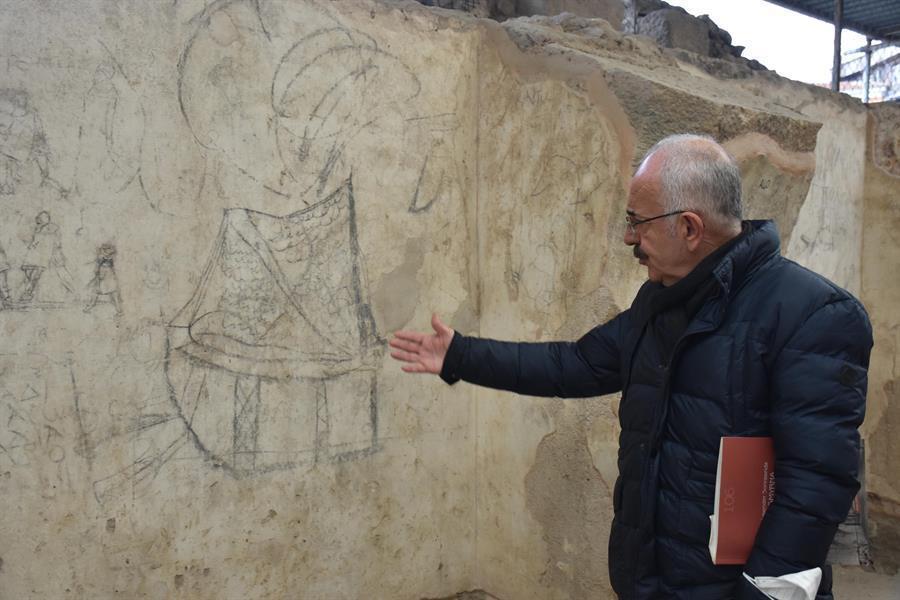
Graffiti of 21 ships drawn in the third century A.D. in the basement of the civil basilica in the Agora of Smyrna, the ancient name of İzmir and known as the world’s biggest ancient-era agora in the city center, are one the most concrete pieces of evidence revealing İzmir was a port city in history.
“In the Agora of Smyrna, which has a history of 2,500 years, there are 21 ship depictions in the basement of the civil basilica, which served as a commercial and judicial building. The ship graffiti, drawn in the third century, shed light on İzmir’s history,” said Akın Ersoy, who is an academic from İzmir Katip Çelebi University and also the excavation director at the ancient city of Smyrna and Agora Theater.
Pointing out that these graffiti reveal that İzmir was an important port city, Ersoy said: “The founders of İzmir built this city by considering the advantages of the port, which made İzmir an important city. Ship descriptions also help us in terms of ship technologies. It is possible to see features, such as sail forms, ship sizes and types, which shed light on ship technologies, based on the descriptions here of what the ships of the period might have been like.”
Explaining that after Alexander the Great, a brand new İzmir city was built in the area where Konak district center is located today, Ersoy stated:
“The port conditions played an important role while selecting a location for this city. In this context, planners of that day searched for port possibilities in order to enable İzmir to participate in the Mediterranean and the Aegean trade and built a brand-new city at this very suitable location. There are many public buildings in the center of the ancient city of Smyrna. One of these public structures is the “civil basilica,” which had both judicial and commercial features. There are dozens of graffiti here. The most prominent of these are 21 ship depictions. Some of these ships were made with paint and some with scraping lines.”
Stating that commercial ships, rather than warships, were depicted on the walls, Ersoy said: “The ships here are those that made commercial voyages in the Mediterranean in the second, third and fourth centuries. They are the ships that transported materials in Egypt and North Africa to the Aegean.”
“İzmir is in the process of being included in the UNESCO World Heritage List. The theme of ‘İzmir Historical Port City’ was chosen for İzmir, which is also an important port city in the Mediterranean today. Referring to this theme, the most important findings, concretely regarding the ancient period, are located on these walls. With İzmir Governor’s Office, the İzmir Metropolitan Municipality and other NGOs, we are trying to unveil the invisible archaeological heritage of İzmir by continuing academic studies in the Smyrna Agora and the Smyrna Theater,” he added.